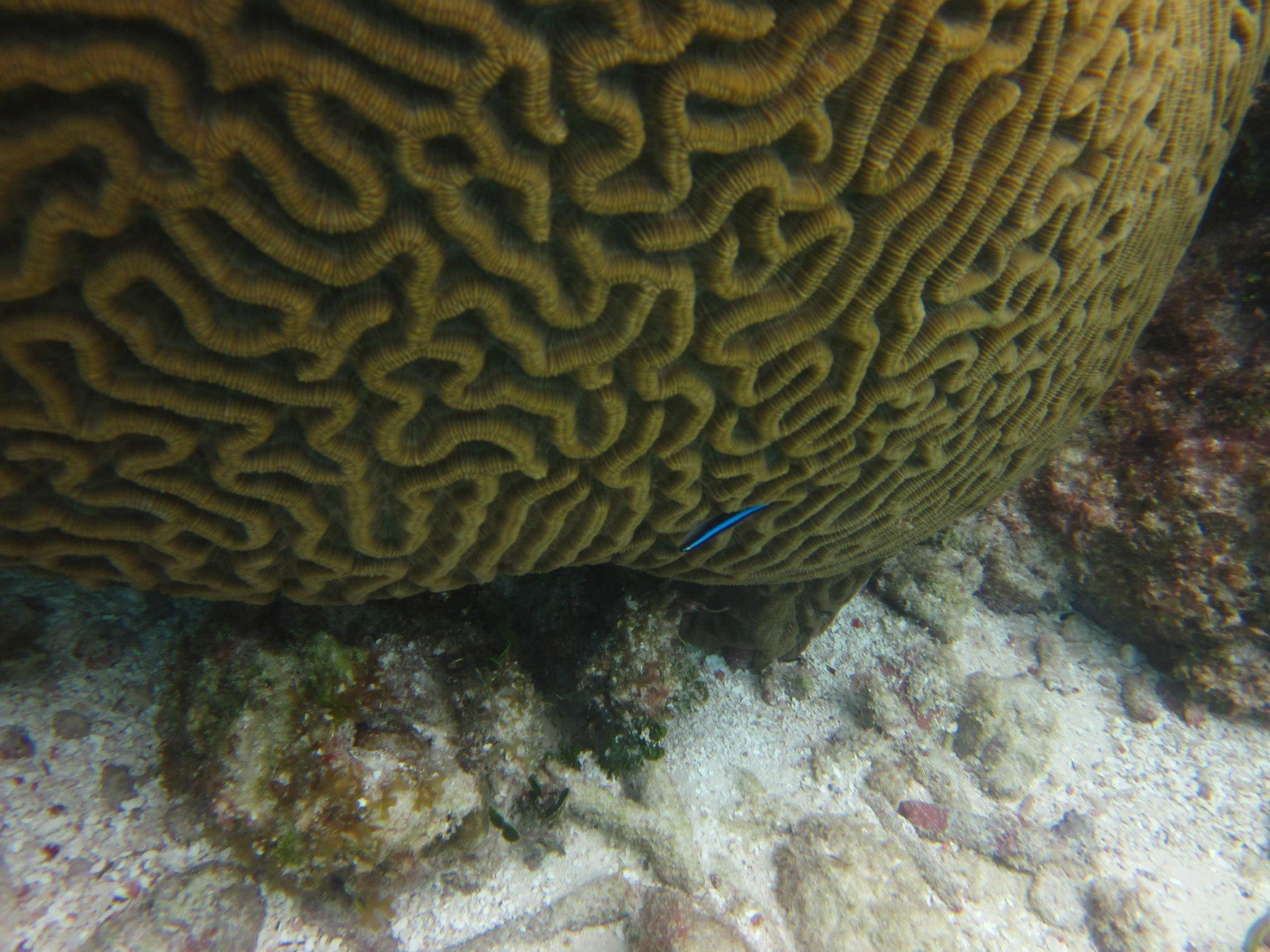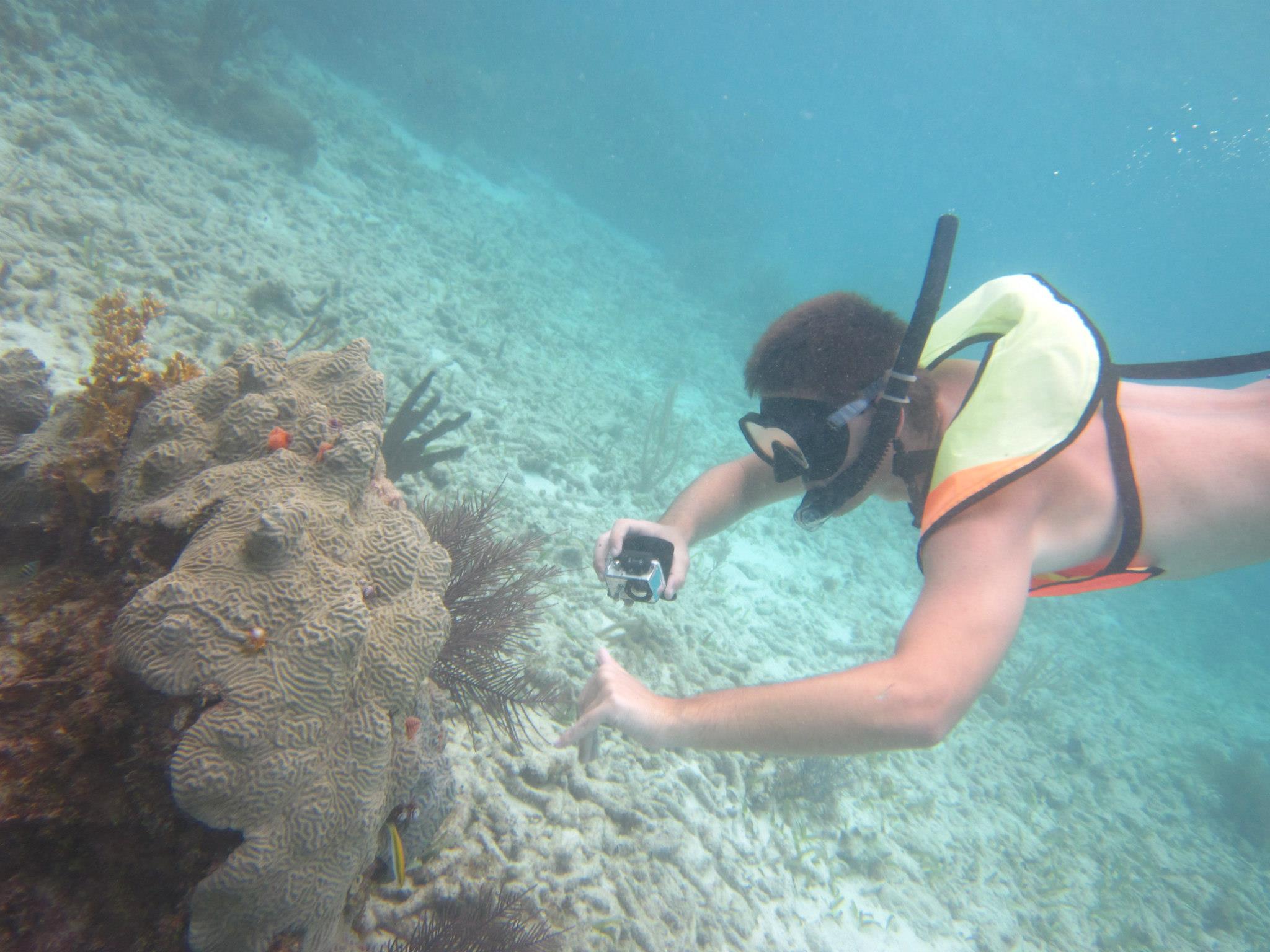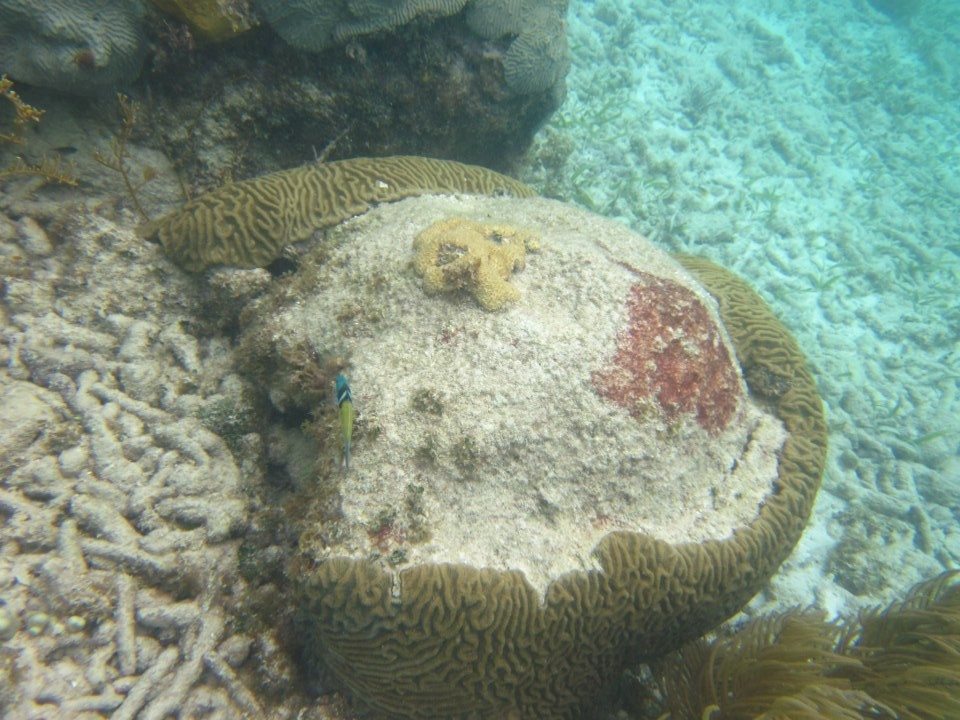Reproduction
Diploria Labyrinthiformis has a cool way of reproducing.
Brain coral most often reproduce sexually. As you can see in this picture, brain coral are not able to move freely, so they release their bright colored eggs and cloudy sperm into the water column. The releasing of the sperm and eggs are often triggered by a full moon during the warm seasons. It has been recorded many times that Diploria labyrinthiformis will release their sperm and eggs five days after the full moon in May. "This event coincides with high air temperature, low number of solar hours per month, low wind velocity, and initiation of rainy season." -Elvira M. Alvarado, Rocio Garcia, and Alberto Acosta 2004. After these sperm and eggs unite, they will grow into tiny larvae and attach to a spot, most often away from the parents, where they will thrive and grow.
Brain coral can also reproduce asexually. This can occur in two ways. The first way is budding, which happens when polyps reproduce asexually and "bud" into a second polyp, then repeat. The second way is fragmentation. This is when a fraction of a brain coral, due to weather or strong currents, breaks apart from the main body. If this fragment settles it can continue to grow and develop into new colonies of polyps and become a new organism.
"This event coincides with high air temperature, low number of solar hours per month, low wind velocity, and initiation of rainy season."
In this following study they are correlating the hours of sunlight with the sea surface temperature in accordance with the growth rate of D. labyrinthiformis and whether or not it has to do with time of reproduction in this organism. In this article it says that by X-radiography, they found out that the average rate of growth for a Diploria labyrinthiformis was 3.8 mm per year. These brain corals were from an island called Isla Grande, which is north of the Rosario islands that you can see in this picture. These marine biologists were studying black bands that were forming annually around the brain coral. After some research, they hypothesized that with the increase in sea surface temperate and decreasing hours of sunlight, that these black bands were in correlated with the time of reproduction.






